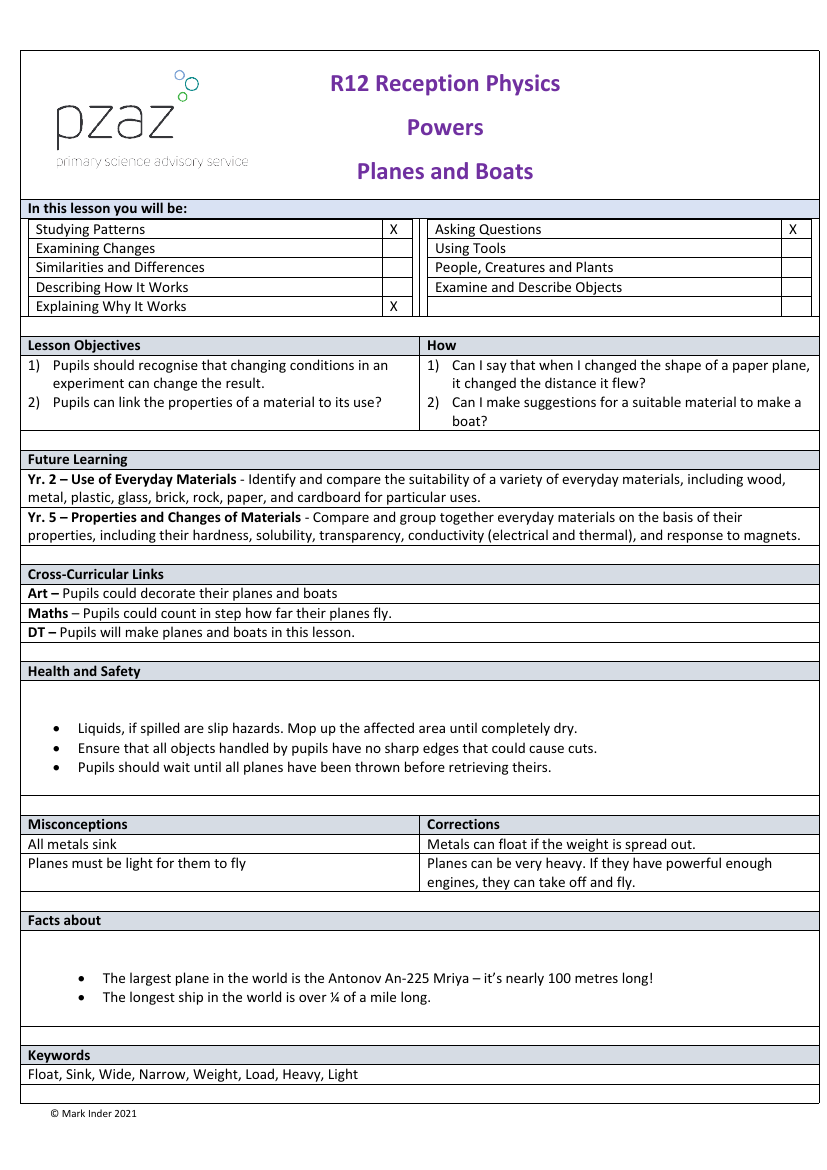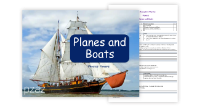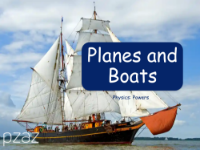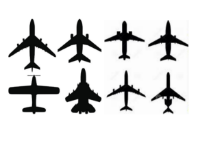Planes and Boats - Lesson Plan

Science Resource Description
The lesson plan crafted by Mark Inder in 2021 is a comprehensive guide for educators to teach pupils about the principles of buoyancy and aerodynamics through practical experiments with planes and boats. The primary objectives of the lesson are for students to understand how altering variables in an experiment can lead to different outcomes and to relate the properties of materials to their practical applications. For example, students will explore how changing the shape of a paper plane can affect the distance it flies and consider what materials are best suited for constructing a boat. The lesson is designed to pave the way for future learning, where students will delve further into the properties of materials and their uses in Years 2 and 5.
The lesson includes a variety of activities that engage students in hands-on learning. They will make and test paper planes, observing the effects of different designs on flight distance and the impact of adding weight with paper clips. A 'Sink or Float?' activity allows them to experiment with various materials in water, challenging preconceived notions that all metals sink and encouraging them to think about density and buoyancy. Art, maths, and design technology are seamlessly integrated, with opportunities for pupils to decorate their creations, measure distances, and construct models. Health and safety considerations are outlined to ensure a secure learning environment. The lesson concludes with a plenary session where students reflect on their findings and assess their understanding of the concepts covered.



